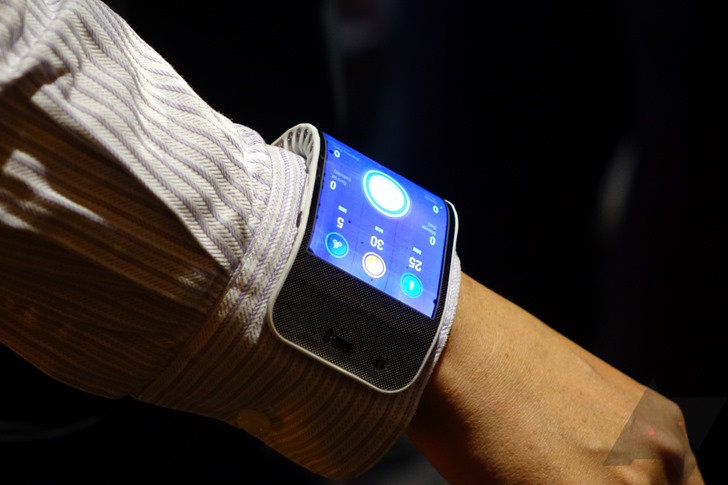In the not so-distant-future you could be wearing your smart phone around your wrist. And, if you're into gold jewelry, you'll be able to accessorize it with whatever other gold baubles complement your bling.
Researchers at Missouri University of Science and Technology have developed a technique that allows wearable device to be completely bendable using silicon and gold.
The research team "grew" thin layers of gold on a single crystal wafers of silicon, then removed the gold foils, and used them as substrates on which to grow other electronic materials.
According to the scientists, their discovery could revolutionize wearable or “flexible” technology research, greatly improving the versatility of such electronics in the future.
POLYMER SUBSTRATES: FLEXIBILITY COMPROMISES PERFORMANCE
Jay A. Switzer, lead researcher of the study, says most research into wearable technology has been done using polymer substrates, or substrates made up of multiple crystals.
However, the allowance of flexibility compromises the performance of these polymer substrates, Switzer explains.
The polymer substrates are made up of multiple crystals, what are called grain boundaries, which can greatly limit the performance of an electronic device.
“Say you’re making a solar cell or an LED,” he explains. “In a semiconductor, you have electrons and you have holes, which are the opposite of electrons. They can combine at grain boundaries and give off heat. And then you end up losing the light that you get out of an LED, or the current or voltage that you might get out of a solar cell.”
Most electronics on the market are made of silicon because it’s “relatively cheap, but also highly ordered,” Switzer says.
Almost 100 percent of "electronics are made out of silicon, and there’s a reason—it works great,” he notes. “It’s a single crystal, and the atoms are perfectly aligned. But, when you have a single crystal like that, typically, it’s not flexible.”
By starting with single crystal silicon and growing gold foils on it, Switzer can keep the high order of silicon on the foil. But because the foil is gold, it’s also highly durable and flexible.
“We bent it 4,000 times, and basically the resistance didn’t change,” he says.
THIN IS IN
The gold foils are also essentially transparent because they are so thin. According to Switzer, his team has peeled foils as thin as seven nanometers.
Switzer says the challenge his research team faced was not in growing gold on the single crystal silicon, but getting it to peel off as such a thin layer of foil. Gold typically bonds very well to silicon.
“So, we came up with this trick where we could photo-electrochemically oxidize the silicon,” Switzer says. “And the gold just slides off.”
Photoelectrochemical oxidation is the process by which light enables a semiconductor material, in this case silicon, to promote a catalytic oxidation reaction.
Switzer says thousands of gold foils—or foils of any number of other metals—can be made from a single crystal wafer of silicon.
The research team’s discovery can be considered a “happy accident.” Switzer says they were looking for a cheap way to make single crystals when they discovered this process.




